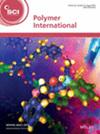求助PDF
{"title":"An associative rheological model for the glass transition of glassy hydrogels undergoing bound and confined interactions","authors":"Ziyu Xing","doi":"10.1002/pi.6768","DOIUrl":null,"url":null,"abstract":"<p>The essential nature of the bound and confined non-covalent interactions in the condensed state and the glass transition of hydrogels has not been fully clarified. At present, the physical principles underlying the formation of glassy hydrogels with high water content (>50 wt%) at ambient conditions and room temperature to achieve superior mechanical properties are still a subject of active research and debate. The complexity of the bound and confined interactions between polymer chains and water poses significant challenges in unraveling the operational mechanisms behind glassy hydrogels. In this study, by combining non-random lattice theory and free volume theory, an associative rheological model is developed to investigate the thermodynamic and viscoelastic behavior of glassy hydrogels undergoing bound and confined interactions. Drawing upon the principles of rheology, the mechanism for the formation of glassy hydrogels at room temperature is described by spring and dashpot elements, where each mechanical element corresponds to a specific molecular mechanism. The nonlinear behavior of rheology is accurately captured by the lattice structure engaged in these interactions. Our proposed model facilitates a transition between the Maxwell and Voigt models, thereby enabling a comprehensive analysis of key viscoelastic parameters such as storage modulus (<i>E′</i>), loss modulus (<i>E″</i>), loss factor (tan <i>δ</i> = <i>E″</i>/<i>E′</i>) and the observed glass transition phenomena in glassy hydrogels. Finally, the effectiveness of the proposed associative rheological models is verified using the experimental results reported in the literature, offering a principal understanding of the exceptional mechanical properties of glassy hydrogels governed by bound and confined interactions. © 2025 Society of Chemical Industry.</p>","PeriodicalId":20404,"journal":{"name":"Polymer International","volume":"74 8","pages":"727-738"},"PeriodicalIF":3.6000,"publicationDate":"2025-04-17","publicationTypes":"Journal Article","fieldsOfStudy":null,"isOpenAccess":false,"openAccessPdf":"","citationCount":"0","resultStr":null,"platform":"Semanticscholar","paperid":null,"PeriodicalName":"Polymer International","FirstCategoryId":"92","ListUrlMain":"https://scijournals.onlinelibrary.wiley.com/doi/10.1002/pi.6768","RegionNum":4,"RegionCategory":"化学","ArticlePicture":[],"TitleCN":null,"AbstractTextCN":null,"PMCID":null,"EPubDate":"","PubModel":"","JCR":"Q2","JCRName":"POLYMER SCIENCE","Score":null,"Total":0}
引用次数: 0
引用
批量引用
Abstract
The essential nature of the bound and confined non-covalent interactions in the condensed state and the glass transition of hydrogels has not been fully clarified. At present, the physical principles underlying the formation of glassy hydrogels with high water content (>50 wt%) at ambient conditions and room temperature to achieve superior mechanical properties are still a subject of active research and debate. The complexity of the bound and confined interactions between polymer chains and water poses significant challenges in unraveling the operational mechanisms behind glassy hydrogels. In this study, by combining non-random lattice theory and free volume theory, an associative rheological model is developed to investigate the thermodynamic and viscoelastic behavior of glassy hydrogels undergoing bound and confined interactions. Drawing upon the principles of rheology, the mechanism for the formation of glassy hydrogels at room temperature is described by spring and dashpot elements, where each mechanical element corresponds to a specific molecular mechanism. The nonlinear behavior of rheology is accurately captured by the lattice structure engaged in these interactions. Our proposed model facilitates a transition between the Maxwell and Voigt models, thereby enabling a comprehensive analysis of key viscoelastic parameters such as storage modulus (E′ ), loss modulus (E″ ), loss factor (tan δ = E″ /E′ ) and the observed glass transition phenomena in glassy hydrogels. Finally, the effectiveness of the proposed associative rheological models is verified using the experimental results reported in the literature, offering a principal understanding of the exceptional mechanical properties of glassy hydrogels governed by bound and confined interactions. © 2025 Society of Chemical Industry.
玻璃化水凝胶玻璃化转变的结合流变模型
在凝聚态和水凝胶的玻璃化转变的束缚和限制的非共价相互作用的本质尚未完全澄清。目前,在环境条件和室温下形成高含水量(> 50% wt%)的玻璃状水凝胶以获得优异机械性能的物理原理仍然是一个积极研究和争论的主题。聚合物链和水之间的束缚和受限相互作用的复杂性对揭示玻璃状水凝胶背后的操作机制提出了重大挑战。本研究将非随机晶格理论与自由体积理论相结合,建立了一种结合流变模型来研究玻璃状水凝胶在受束缚和受限相互作用下的热力学和粘弹性行为。根据流变学原理,室温下玻璃状水凝胶的形成机制由弹簧和阻尼元件描述,其中每个机械元件对应于特定的分子机制。参与这些相互作用的晶格结构准确地捕捉了流变学的非线性行为。我们提出的模型促进了Maxwell模型和Voigt模型之间的过渡,从而能够全面分析关键的粘弹性参数,如存储模量(E ‘),损耗模量(E″),损耗因子(tan δ = E″/E ’)和观察到的玻璃化水凝胶中的玻璃化转变现象。最后,使用文献中报道的实验结果验证了所提出的结合流变模型的有效性,提供了对受束缚和受限相互作用支配的玻璃状水凝胶的特殊力学性能的主要理解。©2025化学工业协会。
本文章由计算机程序翻译,如有差异,请以英文原文为准。




 求助内容:
求助内容: 应助结果提醒方式:
应助结果提醒方式:


